How to Draw a Porsche 911
Despite the huge variety of body options for this sports car, with the help of this tutorial on how to draw a Porsche 911, you can sketch each of them.
The Porsche 911 is a sports car produced by the German company Porsche AG in the body of a two-door coupe or convertible based on it, produced in different generations from 1964 to our days.
During all these decades the design of the car changed, but the basic style remained unchanged.
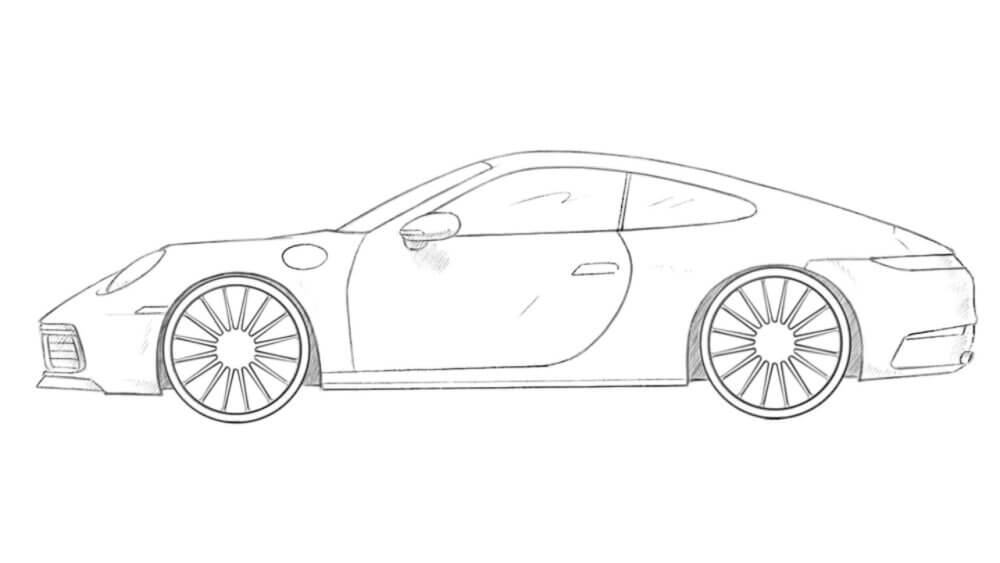
How to draw a Porsche 911: step-by-step tutorial
Step 1 – Sketch the classic Porsche 911 outline
Over the years, new versions of the 911 became faster and filled with new features, almost like spaceships, but the external contours stayed nearly the same and very recognizable. In the first step, sketch these outlines with smooth lines.
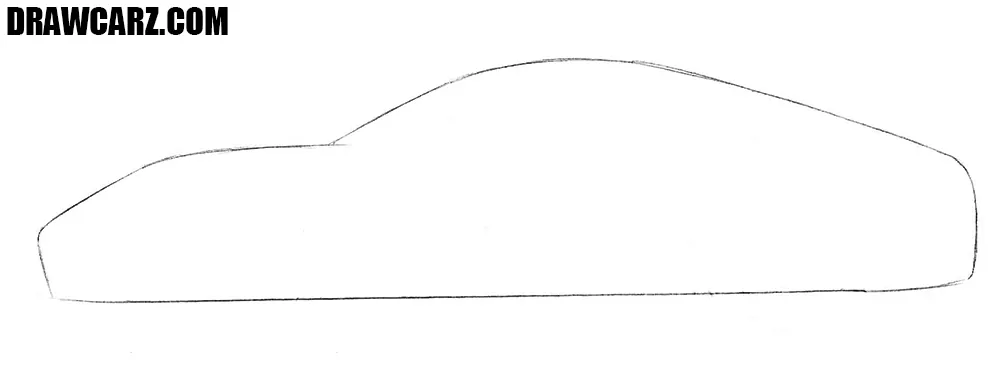
Step 2 – Sketch the large wheels, narrow windows, and lights
Sports cars usually have a flat, streamlined body for aerodynamics, large wheels for grip, and other distinctive features. In this step, outline those elements along with the narrow side windows, mirrors, and headlights.
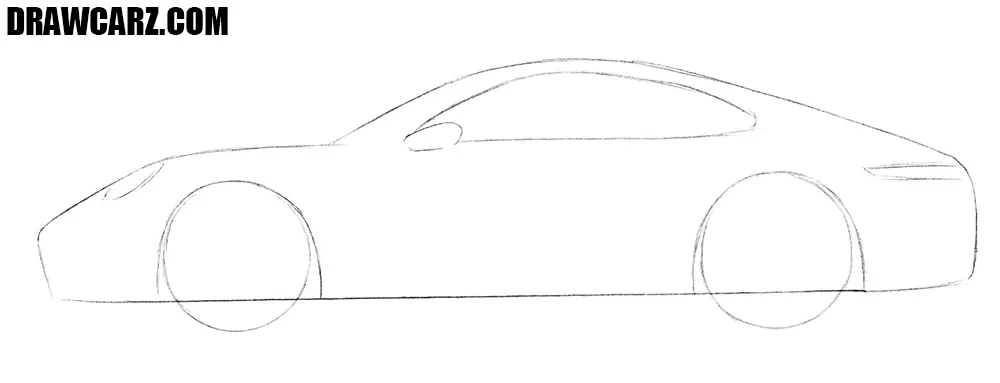
Step 3 – Sketch the single door, bumpers, and rims
The rims and tires should look wide and impressive, so sketch their outlines carefully. In the same step, draw the side window and the single door on this side of the coupe. Finish by outlining the air intake and fuel cap.
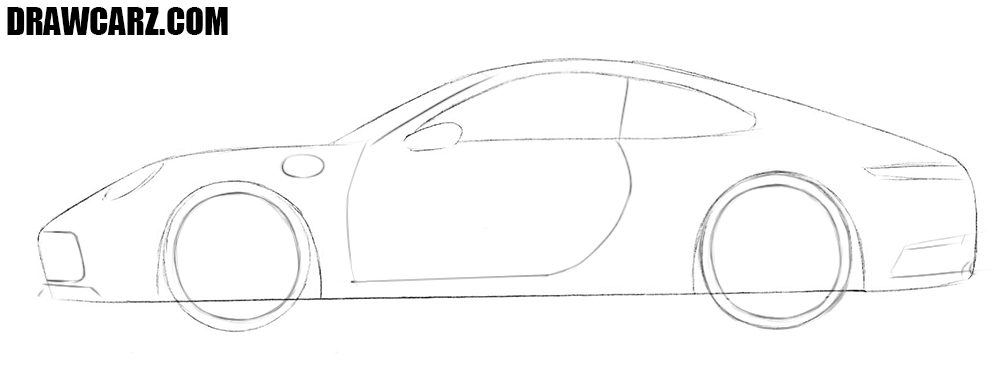
Step 4 – Draw the front fascia of the Porsche 911 in detail
One part that often changes is the bumper and its intakes. To make the German supercar drawing more authentic and natural, show them in detail. Also sketch out the entire front, including the hood and the nearly unchanged round headlights.
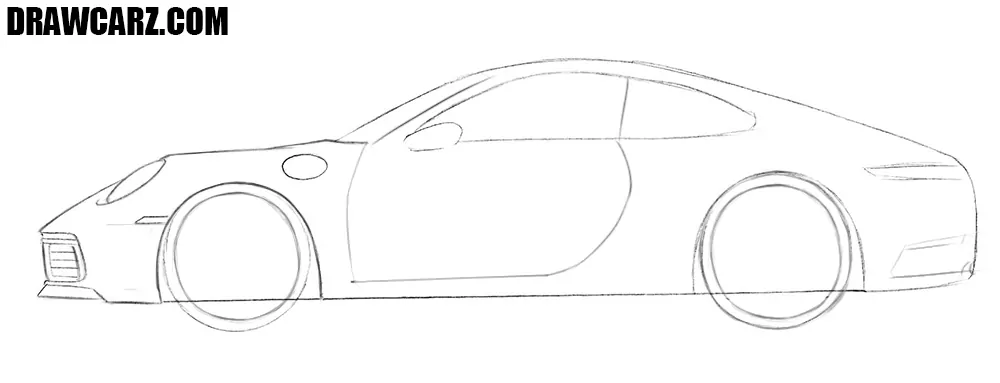
Step 5 – Detail the upper part of the Porsche 911
The top of the 911 is very characteristic of a performance coupe. Sketch the windshield and the flat roof that smoothly transitions into the trunk. Be precise when drawing the mirror and the side window. Give the windows a finished look removing sketchy lines.
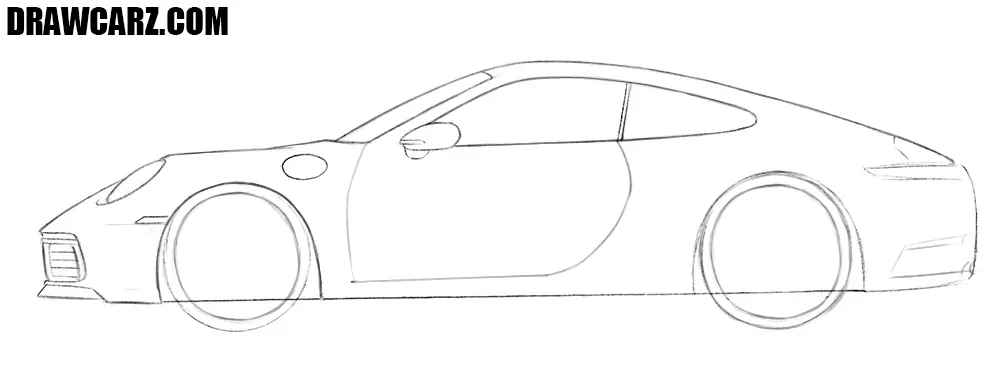
Step 6 – Complete the rear features of the sportscar
Two areas that frequently change are the taillights and bumper. In modern versions, the rear lamp is flat and long, and the bumper has more details and angles. Trace these features and erase extra guidelines. You can also draw the exhaust below the rear bumper.
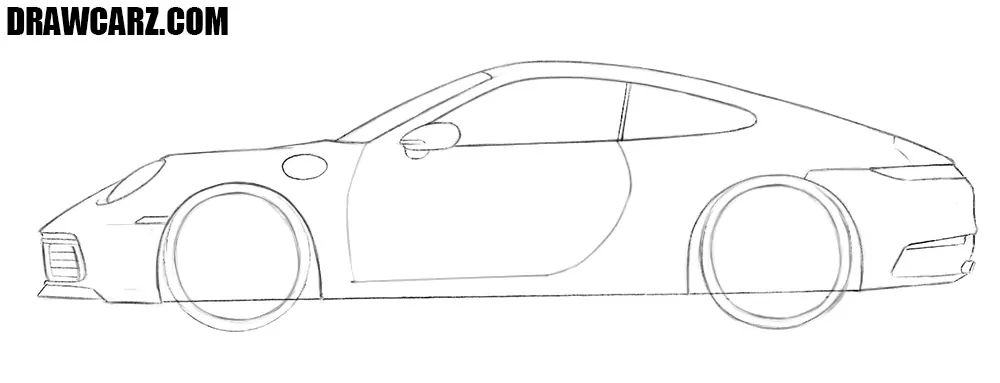
Step 7 – Draw the door and handles of the Porsche 911
Draw a long, clear line for the side skirt. In this step, also sketch the handle and the long door. Take extra care with the round tires and large rims. Use an eraser to clean the entire draft thoroughly. The wheels and rims of the sports car should look oversized.
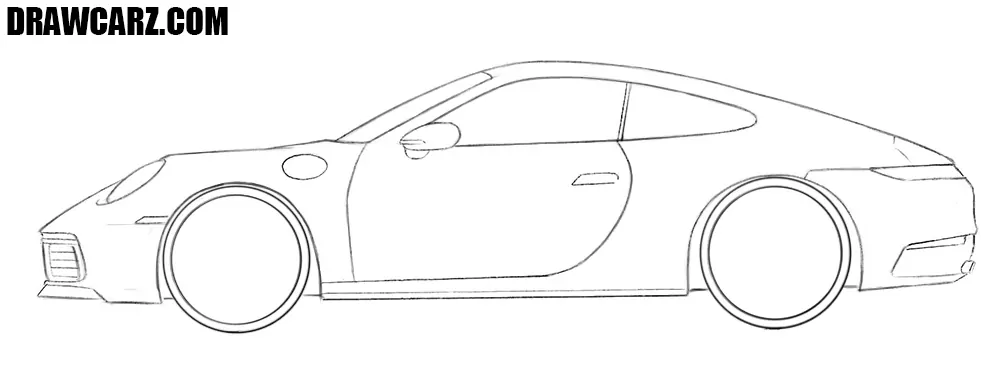
Step 8 – Finalize the tires and draw the spokes of the rims
Be especially careful here, since this step requires sketching the rims. It can be difficult, so don’t rush. To make the rim look natural, sketch the central hubs. Then, sketch the spokes around this center. You can make the design more detailed or use fewer spokes.
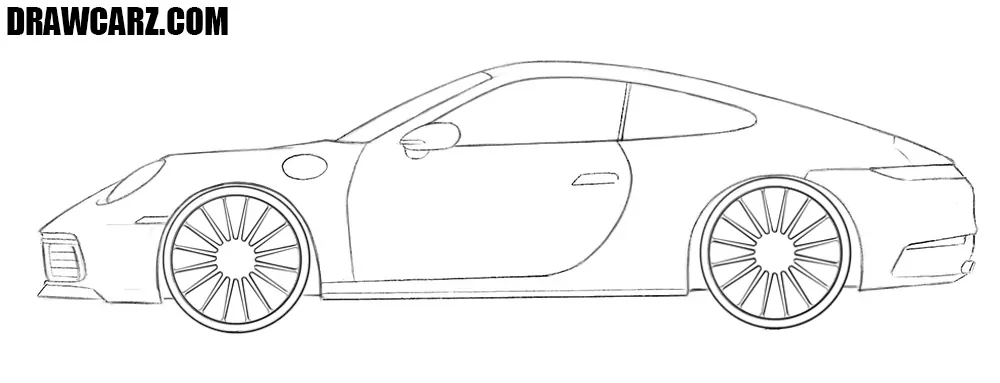
Step 9 – Shade the Porsche 911 body
Shading with hatching will help your supercar drawing look natural and three-dimensional. Keep the light source in mind when adding shadows on the body and highlights on the glass. First, shade the darkest areas, then you can add mid-tones and highlights. To make the windows look more realistic, add reflections.
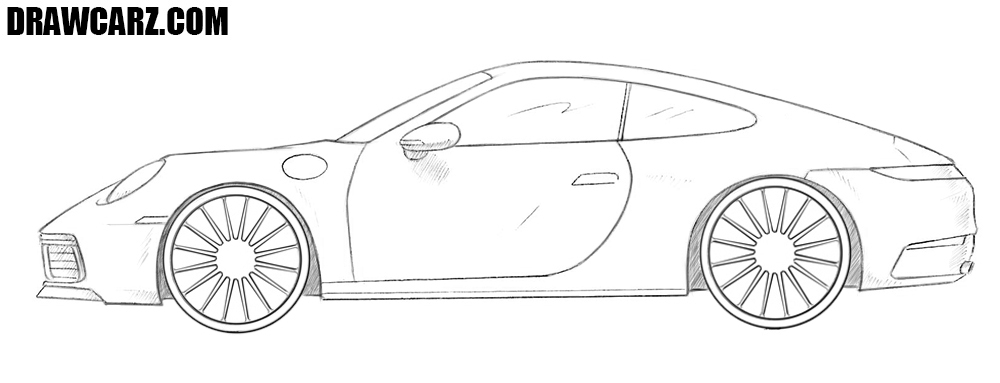
Porsche 911 video tutorial
New generations and design legacy
The release of new models of this classic sports car is always a big event, and the team at DrawCarz hopes that this lesson will be no less enjoyable than the debut of the real vehicle.
Each new generation of the 911 builds on a legacy of performance and design that stretches back decades. Practicing to draw it not only helps you improve your skills but also connects you with one of the most iconic shapes in automotive history.
This German coupe has 24 modifications, and with the help of this guide, you can sketch each of these versions.
From the Carrera and Targa to the Turbo and GT3, every variant has its own features in bodywork and details. You can experiment with them by adjusting proportions, spoilers, intakes, and wheel designs in your drawings.
For example, to capture the Carrera look, make the wheel arches more pronounced and add the famous “whale tail” spoiler for the Turbo. The bumpers are thicker and the overall stance is wider.
When drawing the earliest models, pay attention to the smaller body size and very simple, upright headlights. Compared to modern coupes, the fenders are less muscular, the bumpers are slimmer, and the roofline is more upright.
In sketches, reduce the wheel size slightly, make the body slimmer, and keep the lines smoother without aggressive curves.
To draw a convertible version, remove the roofline of the coupe and replace it with a lower, flat beltline. Pay attention to the folded soft top or show it in the open position with clean lines around the rear deck.
Further practice with sports cars
You can also draw performance cars of other brands using this guide. Just adjust the shapes of the body and necessary details.
If you want to continue with other famous marques, check out our Ferrari tutorial. This guide shows step by step how to illustrate another legendary sports car.
For fans of American classics, our lessons on drawing a Ford Mustang are a great choice. This model has a muscular stance and bold lines that make it a perfect contrast to the smooth curves of the 911.


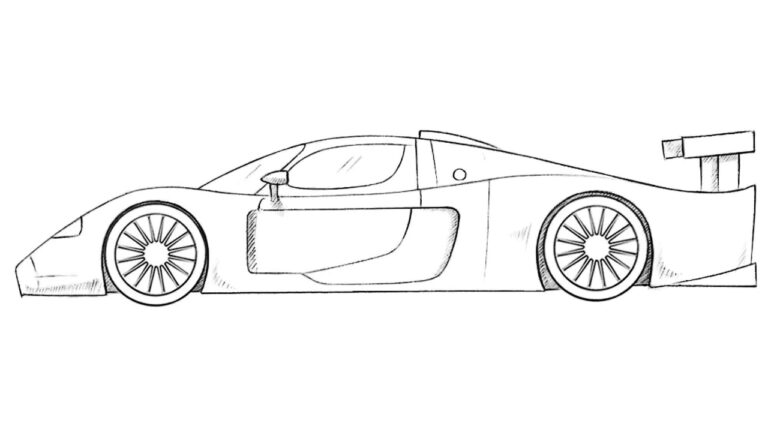
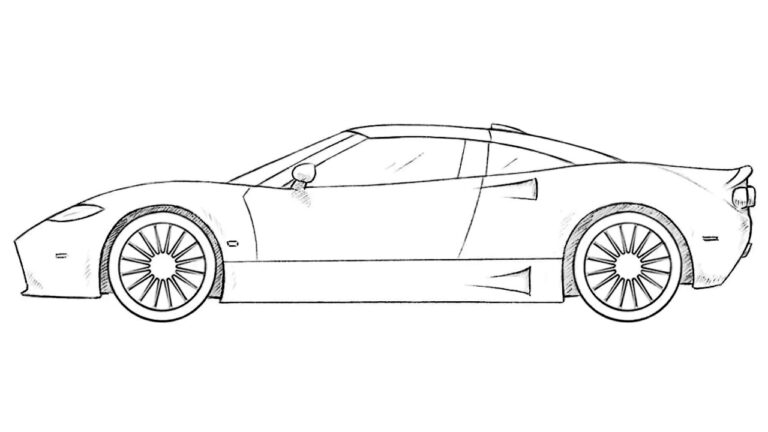
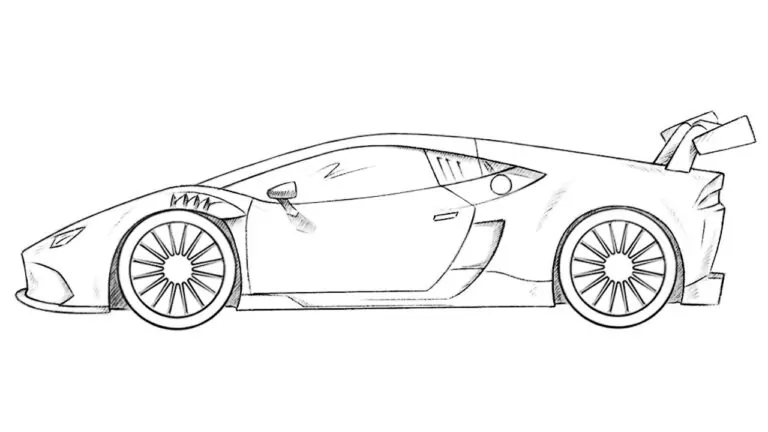


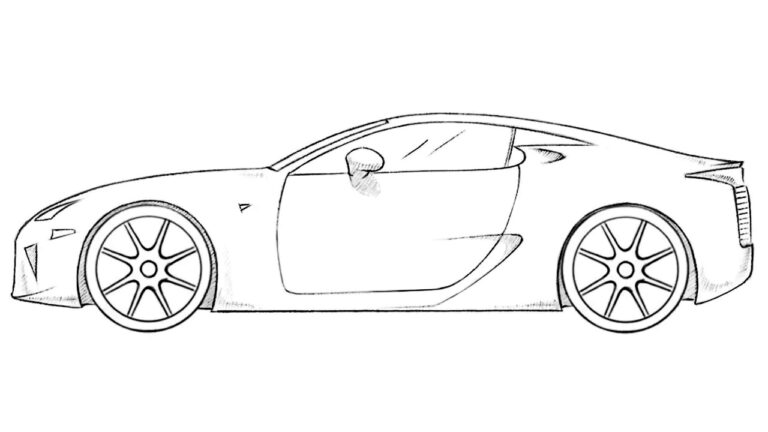
nice
Thanks, Pop!
this drawing make anuother porches thatnks for it it helped me
Glad it helped, Mohammed! More Porsche drawing tutorials will definitely be added.
brilliant
Thank you.
i think that s good but im not good in drawing XD
Appreciate it! Don’t worry – with more practice your drawing skills will keep improving.